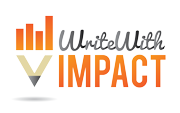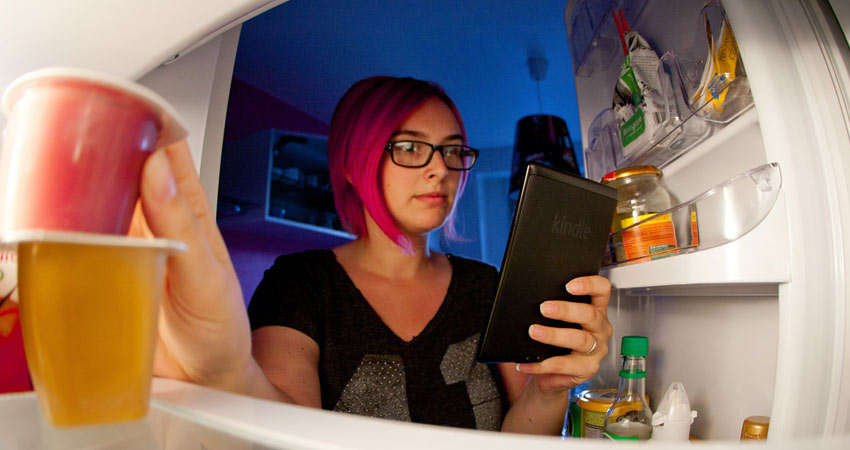Self-publishing on Amazon is all the rage today.
It gives authors of fiction and non-fiction a platform to turn their manuscript into a published book available for sale to readers around the world in a fraction of the time that it normally takes with a traditional publisher.
And the profit margins are higher: compare the 70% commission that Amazon offers on books sold in certain countries and within certain price ranges to the 8–10% royalty rate that traditional publishers offer (and which an author receives only after the publisher recoups its advance on royalties).
Even the 35% commission Amazon offers on higher-priced books (and for books sold in other countries where the higher rate is not applicable) is a good three to four times what traditional publishers pay.
For some authors, self-publishing is a chance to build their authority on a topic and draw attention to their more profitable off-line businesses such as consulting, training programs, or speaking engagements.
Other authors are happily supplementing income from their full-time day jobs with book sales.
And then there is a small but growing number of self-publishers like Steve Scott who are earning substantial full-time incomes from their books on Amazon.
Steve has over 50 titles to his name on Amazon, all contributing to the income that allows him to escape the 9-to-5 and have the freedom to publish on whatever topic he wants, and on his schedule.
Since he publishes monthly income reports, you can see how he went from earning less than $50 in February 2012, when he first started selling on Amazon, to earning from $20,000 to upwards of $65,000 in a single month.
Steve is now ranked third in Kindle eBooks in the business and finance category.
In a podcast interview I conducted with him recently, he spoke about how he went from compiling a few blog posts and posting it on Amazon just a few years ago, to building the profitable self-publishing business that he runs today.
I’ve jotted down a few things I learned from my conversation about how he approaches self-publishing, plus some of his tips for authors planning to self-publish their first book.
How Steve Scott approaches self-publishing
He treats it like a business. Steve treats self-publishing as the business that it is. He always has a pipeline of books that he feeds into his catalog: one that he’s working on at the moment, another that he recently launched which he needs to market, and a third that he’s thinking about and for which he’s starting to conduct initial research.
He outsources lower value-added tasks to virtual assistants so he can focus on writing books and doing the sort of marketing activities that only he can do, like recording three podcast episodes a week. And he takes a methodical approach to building his brand and promoting his books.
He’s always experimenting. When I spoke to him, he was in the middle of conducting an experiment with Amazon Marketing Services, which includes programs such as Amazon’s pay-per-click advertising platform. He also recently launched a series of instructional videos on his Facebook page, and is exploring how to leverage Facebook ads to generate sales. And he’s planning an online course that will help aspiring authors build their own self-publishing businesses.
He’s preparing for disruptions. When I asked him whether he worries that Amazon might change its pricing structure or otherwise change the rules that could disrupt how he does business, he said, “I don’t worry, I know it will happen.” He continues to build his book catalog and email list, and indicated he may ramp up distribution in other channels to diversify risk.
He’s transparent. Steve is unusually transparent about how he runs his business. In addition to sharing his monthly sales figures on his blog, he dives deep into all facets of building a self-publishing business and answers questions submitted by listeners to his thrice-weekly podcast.
Six tips for first-time authors
Steve also shared some tips for first-time authors seeking to self-publish their first book on Amazon.
1. Write about what you know (and love). Pick a topic that you’re both passionate about, and about which you have some degree of knowledge as well.
2. Find a profitable niche. Steve describes the process of finding your niche as “going one inch wide and one mile deep”. To gauge whether your topic is one that is generating a critical mass of sales on Amazon, Steve suggests conducting what he calls the “30,000 rule test”. If books in your target topic category have an Amazon sales ranking that falls under 30,000, that’s a sign that they are moving copies. Of course, the lower the number, the higher the ranking, and therefore the more attractive that category is likely to be.
3. Craft a catchy title. Steve is careful about choosing a title that will attract readers and make them want to buy. He likes two to three memorable words for the title, with a longer sub-title that explains the core benefits of the book.
4. Butt-in-chair time. When it comes time to doing your “butt-in-chair time” and writing your book, Steve suggests adjusting your schedule to fit your Circadian rhythms. Simply put: write when you are most alert and likely to be productive, which for Steve (and many other writers) is in the morning.
5. Seek out feedback. While he cautions against opening yourself up to too much feedback, Steve nonetheless advises reaching out to writing groups and friends for honest feedback on various aspects of your book. He recently dipped into a widely followed Facebook group to ask for feedback on a title he was considering for one of his upcoming books. Suggestions he received from group members helped him to rework the language and land on a title he eventually used.
6. Build an email list. Email drives a large proportion of Steve’s book sales, which is why he urges any fledgling author to start building their list early – and keep building it. Email gives you a level of direct and intimate access to your readers that social media can’t (and Amazon won’t, since it controls the information that it collects on the buyers of your books).
Building your email list starts with providing an attractive opt-in offer such as a free guide or checklist that you’ll give to prospective readers in exchange for their email addresses. And you’ll want to promote the offer in your books, on your website, and anywhere else that you communicate with potential readers of his books.
Have you self-published on Amazon yet? Are you planning to? What else would you add to this checklist? Please weigh in with a comment below!
***
There’s much more that we discussed on the podcast, and I think it’s worth listening to if you’re serious about self-publishing your first (or next) book on Amazon or another platform. Just click here to listen to our conversation, or go straight to iTunes here where you can listen to this episode and subscribe to my free podcast, Write With Impact.

